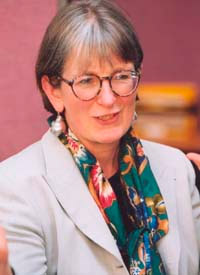By: Sheila Moorcroft
Two recent events – one a corruption tour, the other the opening of a new academic institute- appear to extend and change the nature of what has become known as ‘dark tourism’- an interest in death and the macabre. New technology will continue to expand the potential offer of dark tourism; it may also do for politics and corruption, what eco-tourism has done for awareness of the environment.
What is changing?
The new, and apparently first in the world, Institute for Dark Tourism Research aims to understand our seemingly insatiable appetite for and the potential impacts of visiting tourist sites of ‘death, disaster or the seemingly macabre’. Destinations which meet the definition of ‘dark tourism’ include First World War or Vietnam War battle fields; disaster sites such as Chernobyl; areas of earthquake damage; museums at locations of cruelty such as Auschwitz or Perm-36; walks in the footsteps of killers such as Jack the Ripper in Victorian London or Jeffrey Dahmer a serial killer in Milwaukee in the late 1980s early 1990s.
The second is a new tour in Prague: the Corruption Tour which takes tourists, as of March 2012, on a 2-3 hour tour of corruption hot spots, where bribes are passed and deals done. The Czech Republic came 57th, on a list of 178 countries but equal to Namibia and Saudi Arabia, in the 2011 Corruption Perception Index. However, awareness of corruption in the Republic is growing, according to a recent survey, also in March 2012. Whether the two things are linked remains to be seen.
There is a growing array of tourist attractions which could fit the ‘dark tourism’ definition – such as hotels in prisons as far afield as Oxford in England, Stockholm in Sweden and Napier in New Zealand; theme parks to the memory of events during Stalin’s time in Latvia; and a growing number of ‘experiences’ within museums which bring situations, such as life in the WW1 trenches, alive.
Why is this important?
There are undoubtedly huge opportunities in dark tourism, and as technology enables ever more realistic experiences including sights, sounds, smells, and sensations, these will grow. But at the same time, concern about the effects on brains and behaviour of videogames is also growing. Such experiences may need to come with a ‘health warning’. Certainly the timeframe within which events are commercialised can be an issue, as in the case of the Dahmer trail in Milwaukee.
Dark tourism may be following in the footsteps of soap operas the world over, which have, for many years, dealt with significant issues ranging from domestic abuse to alcoholism to abortion; raising awareness and debate and reaching a scale of audience that a more authoritative documentary never could. There may also be parallels with the emergence of eco-tourism. That by finding ways to make our knowledge and understanding of corruption, violence, history, or politics more vivid and digestible, we may be able to influence public perceptions and perhaps change behaviours and attitudes on any number of fronts; as a result, campaigns for reform may get impetus from publicity.
By Sheila Moorcroft
About the author
 Sheila has over 20 years experience helping clients capitalise on change – identifying changes in their business environment, assessing the implications and responding effectively to them. As Research Director at Shaping Tomorrow she has completed many futures projects on topics as diverse as health care, telecommunications, innovation management, and premium products for clients in the public and private sectors. Sheila also writes a weekly Trend Alert to highlight changes that might affect a wide range of organisations. www.ShapingTomorrow.com
Sheila has over 20 years experience helping clients capitalise on change – identifying changes in their business environment, assessing the implications and responding effectively to them. As Research Director at Shaping Tomorrow she has completed many futures projects on topics as diverse as health care, telecommunications, innovation management, and premium products for clients in the public and private sectors. Sheila also writes a weekly Trend Alert to highlight changes that might affect a wide range of organisations. www.ShapingTomorrow.com
